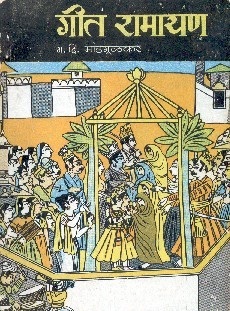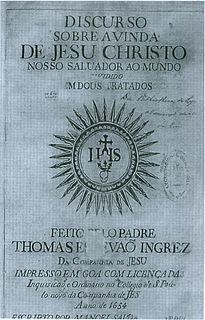 W
WAmrutanubhav or Amritanubhav is a composition by the Marathi saint and poet Jñāneśvar during the 13th century. It is considered to be a milestone in Marathi literature.
 W
WDāsbodh, loosely meaning "advice to the disciple" in Marathi, is a 17th-century bhakti (devotion) and jnana (insight) spiritual text. It was orally narrated by the saint Samarth Ramdas to his disciple, Kalyan Swami. The Dāsbodh provides readers with spiritual guidance on matters such as devotion and acquiring knowledge. Besides this, it also helps in answering queries related to day-to-day life and how to find solutions to it.
 W
WThe Dnyaneshwari, also referred to as Jnanesvari, Jnaneshwari or Bhavartha Deepika is a commentary on the Bhagavad Gita written by the Marathi saint and poet Sant Dnyaneshwar in 1290 CE. Dnyaneshwar lived a short life of 21 years, and this commentary is notable to have been composed in his teens. The text is the oldest surviving literary work in the Marathi language, one that inspired major Bhakti movement saint-poets such as Eknath and Tukaram of the Varkari (Vithoba) tradition. The Dnyaneshwari interprets the Bhagavad Gita in the Advaita Vedanta tradition of Hinduism. The philosophical depth of the text has been praised for its aesthetic as well as scholarly value.
 W
WGeet Ramayan is a collection of 56 Marathi language songs chronologically describing events from the Indian Hindu epic, the Ramayana. It was broadcast by All India Radio, Pune in 1955–1956, four years before television was introduced in India. Written by G. D. Madgulkar and the songs being composed by Sudhir Phadke, Geet Ramayan was acclaimed for its lyrics, music and singing. It is considered a "milestone of Marathi light music" and the "most popular" Marathi version of Ramayana.
 W
WKrista Purana is an epic poem on the life of Jesus Christ written in a mix of Marathi and Konkani by Fr.Thomas Stephens, S.J. (1549–1619). Adopting the literary form of the Hindu puranas, it retells the entire story of mankind from the creation days to the time of Jesus, in lyrical verse form. The Christian Puranas – 11,000 stanzas of 4 verses – were very popular in the churches of the area where they were sung on special occasions up to the 1930s. Although no copy of the original edition has yet been discovered, it is believed to have been published at Rachol (Raitur) in 1616, 1649, and 1654.
 W
WThe Sai Satcharita is a biography based on the true life stories of Sai Baba of Shirdi. Authored by Shri. Govind Raghunath Dabholkar alias Hemadpant, the original edition of the Sai Satcharitra was published in Marathi on 26 November 1930. A subsequent English edition was soon published in 1944, by Shri. Nagash Devastate (N.V.) Gunaji, translated from the original Marathi composition.
 W
WShrimadh Bhagvad Gita Rahasya, popularly also known as Gita Rahasya or Karmayog Shashtra, is a 1915 Marathi language book authored by Indian social reformer and independence activist Bal Gangadhar Tilak while he was in prison at Mandalay, Burma. It is the analysis of Karma yoga which finds its source in the Bhagavad Gita, a sacred book for Hindus. According to him, the real message behind the Bhagavad Gita is Nishkam Karmayoga, rather than Karma Sanyasa, which had become the popular message of Gita after Adi Shankara. He took the Mimamsa rule of interpretation as the basis of building up his thesis.